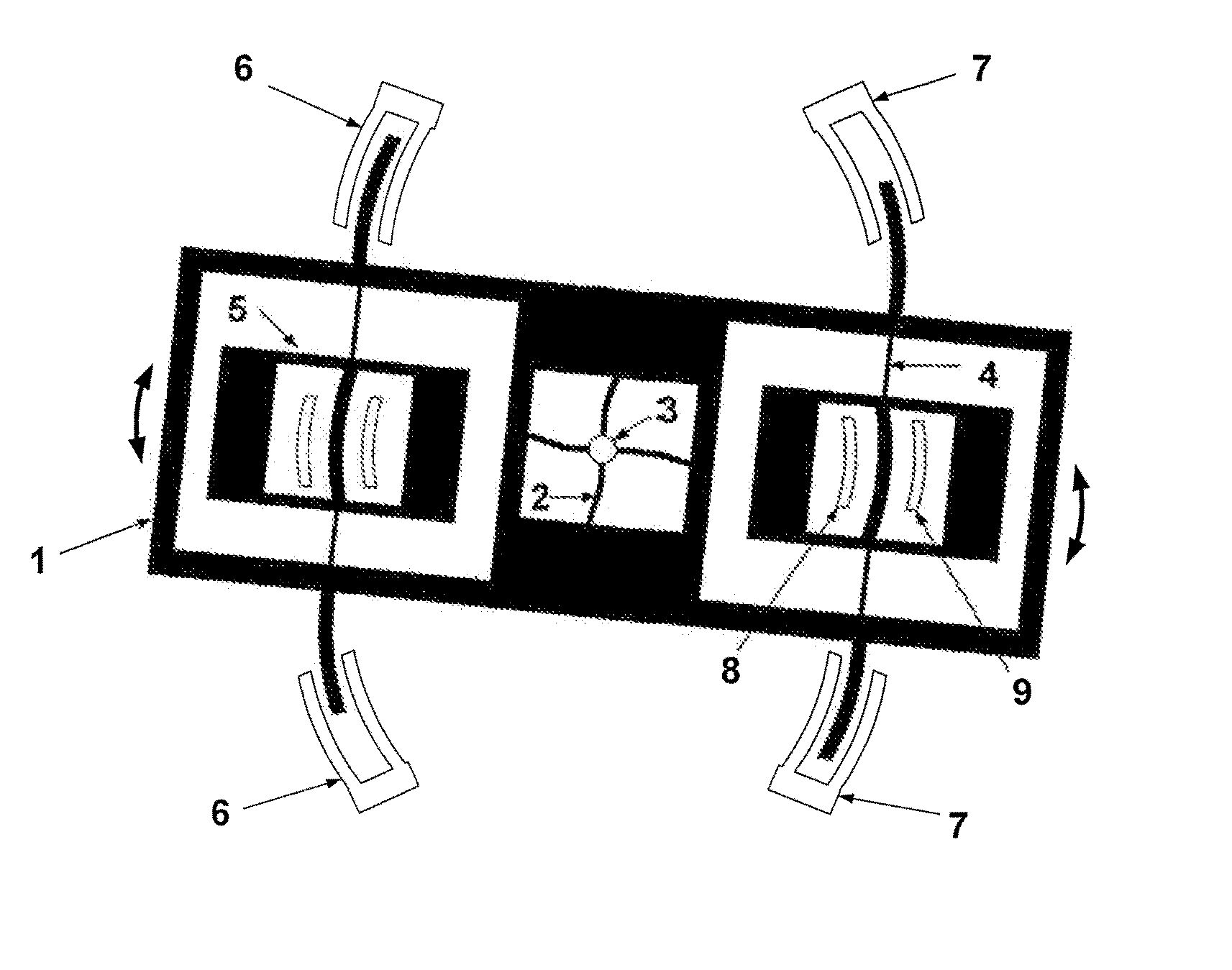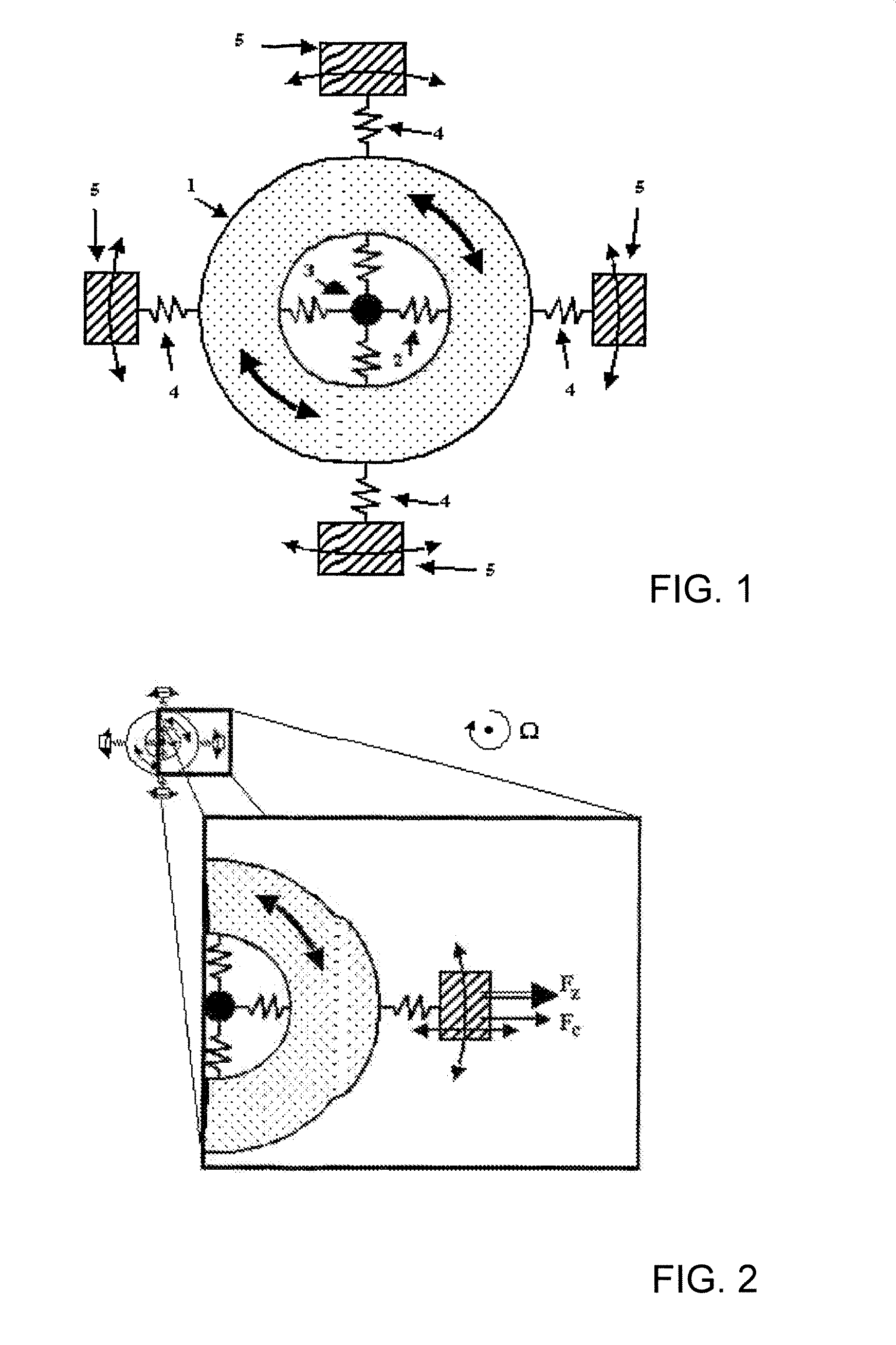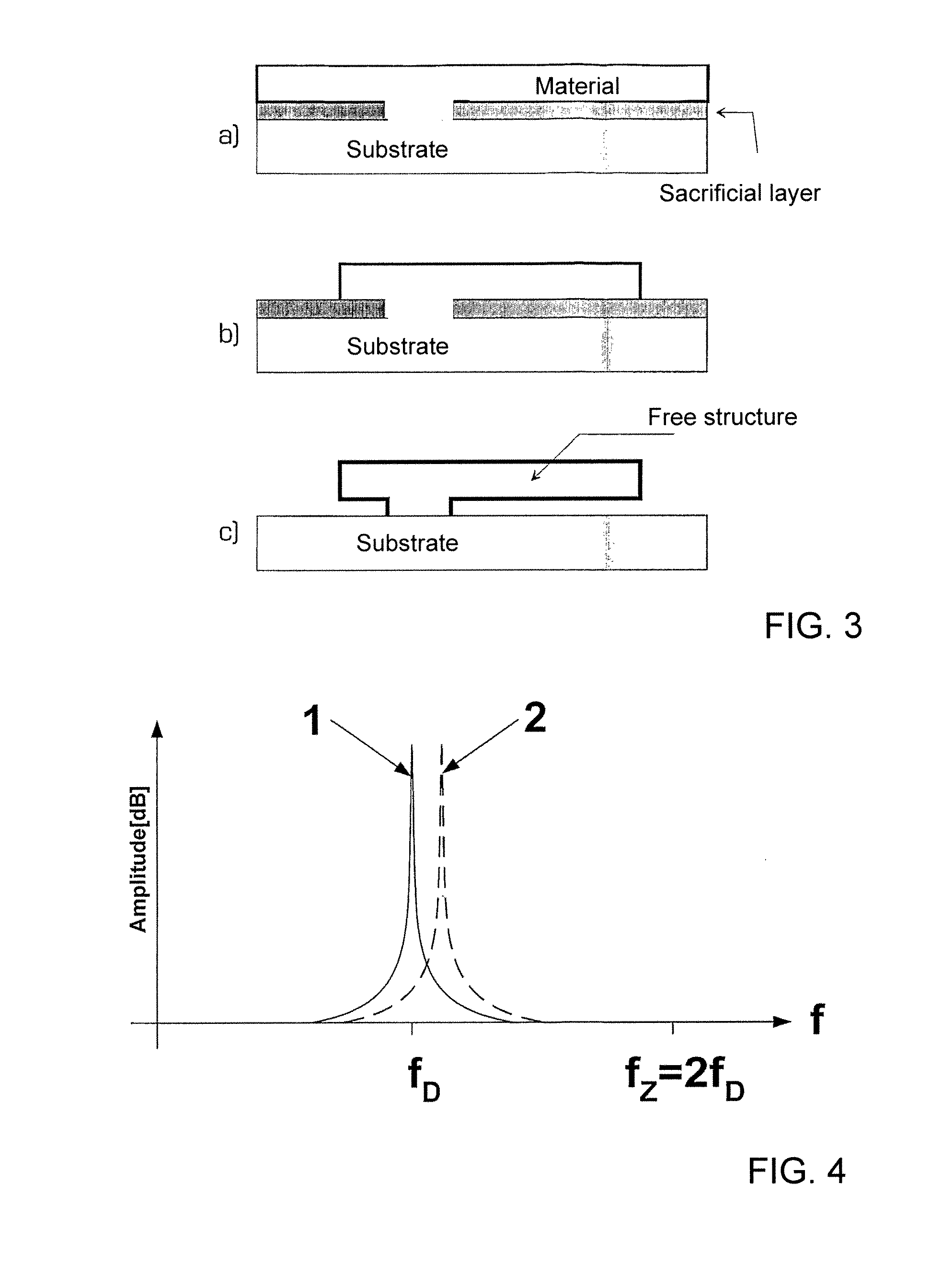Angular rate sensor featuring mechanically decoupled oscillation modes
a technology of angular rate sensor and oscillation mode, which is applied in the direction of speed measurement using gyroscopic effects, devices using electric/magnetic means, and automatic control of pulses, etc. it can solve the problem of direct impact on production costs, inability to tilt the primary oscillator, and inability to detect rotation motion about the same axis
- Summary
- Abstract
- Description
- Claims
- Application Information
AI Technical Summary
Benefits of technology
Problems solved by technology
Method used
Image
Examples
Embodiment Construction
[0023]The following designations will be used throughout the specification for oscillations and frequency:
vD, vD*: excitation (drive) oscillation, reference oscillation
fD, fD*: frequency of vD, vD*
f1: resonance frequency of this oscillating system
fD, fD* is generally selected so as to coincide with f1 for achieving the largest possible oscillation amplitude: fD=f1
vS: detection (sense) oscillation, measurement oscillation
fS: frequency of vS
f2: resonance frequency of this oscillating system
By matching the geometry, f2 is approximately equal to f1.
fMD: modulation frequency for measuring the reference oscillation
fMS: modulation frequency for measuring the measurement oscillation.
fZ: frequency of the (disturbance) oscillation produced by the centrifugal force.
[0024]Exemplary embodiments of the present invention will now be described in more detail with reference to FIGS. 1 to 9. FIGS. 1 and 6 illustrate embodiments of the angular rate sensor of the invention. The sensor includes an osc...
PUM
 Login to View More
Login to View More Abstract
Description
Claims
Application Information
 Login to View More
Login to View More - R&D
- Intellectual Property
- Life Sciences
- Materials
- Tech Scout
- Unparalleled Data Quality
- Higher Quality Content
- 60% Fewer Hallucinations
Browse by: Latest US Patents, China's latest patents, Technical Efficacy Thesaurus, Application Domain, Technology Topic, Popular Technical Reports.
© 2025 PatSnap. All rights reserved.Legal|Privacy policy|Modern Slavery Act Transparency Statement|Sitemap|About US| Contact US: help@patsnap.com



